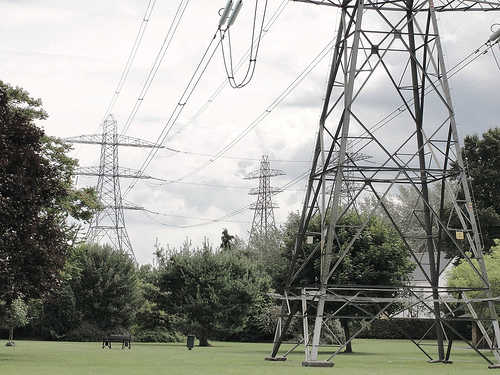A new form of demand response could help protect the grid and in doing so save Britain from required spending on infrastructure of as much as £1.26 billion by 2020, according to service provider Open Energi.
In essence, Dynamic Demand Response is where very short term requests to curtail or ramp up a certain amount of energy use are necessary to maintain the frequency of the grid, which can fluctuate. These requests typically require several megawatts of power to be taken off the grid – or less commonly, added to the grid – within an average time-span of two seconds. At present, much of the grid balancing for frequency response is done in the UK by coal and gas-fired power plants.
Open Energi supplies its “invisible” demand response service to the National Grid.
The company seeks as its clients large energy users such as supermarkets or industrial manufacturers, who are asked to fit smart devices to their equipment. These devices then adjust the amount of energy used by the client to help balance electricity supply and demand. Open Energi’s system, called Dynamic Demand, requires clients’ equipment and energy systems to be able to respond between 2 seconds and 30 minutes.
The two organisations hosted a breakfast briefing for journalists last week where Open Energi chief executive, Ged Holmes, explained how the system works and explained that the idea is that businesses are able to earn revenue for providing what is effectively spare capacity from their energy use.
For example, one client, Aggregate Industries, which produces asphalt for roads, uses vast bitumen tanks that require heating. Aggregate Industries has a certain amount of leeway in how rapidly the tanks need to be heated for the temperature they need to be kept at. Open Energi’s smart devices are configured to only curtail or switch off power within the limits of what Aggregate Industries needs to use normally, thus acting “invisibly” as far as the client is concerned.
.
Video: University of East Anglia uses Open Energi’s demand response solution to keep the lights on
Open Energi argues that such modernised approaches eliminate some of the need to build infrastructure for grid balancing services, which could save £1.1 billion, a significant sum, although only a predicted 1% of the total spending needed on infrastructure between now and 2020. Factoring in grid modernisation and peaking power costs, Open Energi claims the total figure saved could be closer to £1.26 billion by then.
Next Energy News asked Open Energi how it finds clients, since presumably there is a need to find clients with some ‘give-and-take’ possible in their energy use, to which chief executive Ged Holmes replied that the company takes a sector-based approach in identifying potential customers.
“We have adopted a sector-based approach to customer acquisition; identifying energy-intensive sectors where we think there are a lot of viable loads i.e. equipment and processes which are suitable for Dynamic Demand. This includes the water sector, retail, universities, commercial buildings and heavy industry such as metal processors/foundries and aggregates companies.”
Next Energy News was also curious as to how adaptable the technology might be, if for example the UK decided to trial using batteries to balance grids, as has been trialled in other countries like Japan recently.
“Everything we install is flexible both in what we can install on (e.g. batteries) and what market the asset can then be bidded in to,” said Holmes, “So it is very much future proofed from both angles.”
.





